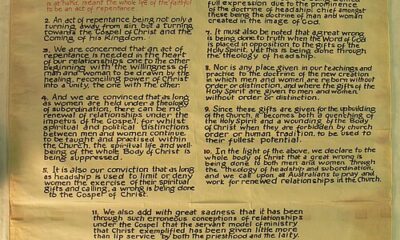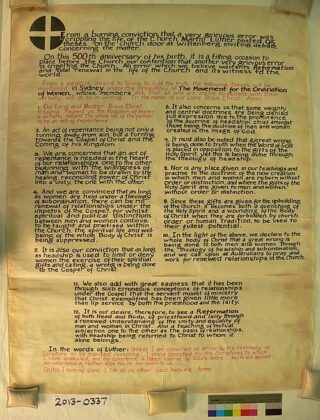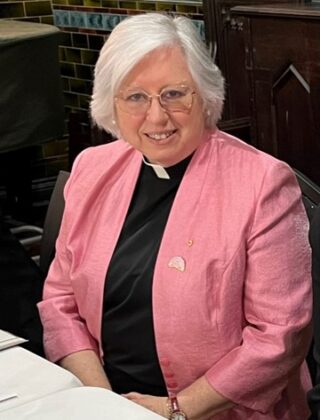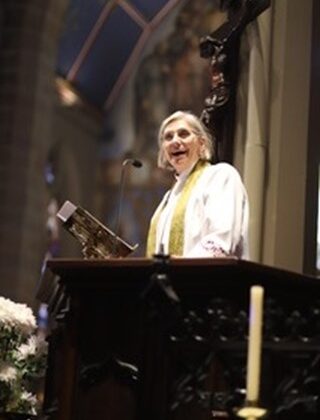Are ‘conservative evangelicals’ really conservative and evangelical?
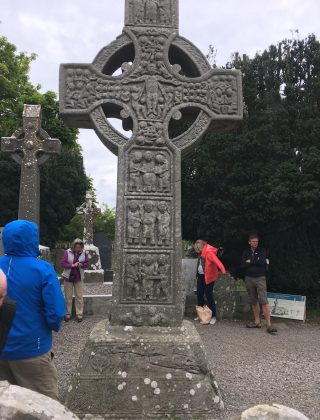
There are stages in my life when I have been strongly influenced by the Evangelical tradition, a tradition that has helped to nurture my personal prayer life and that has also encouraged me in my vocation.
In my late teens and early twenties, I attended evangelical youth camps in Moyallon near Tandragee and rallies in Co Wexford organised by the late Revd Robert Dunlop as he toured the south-east in his ‘churchmobile,’ with its gothic-style decorations, forty seats and a fold-away steeple.
To this day, when I think of evangelicals, I think of the many radical evangelicals of the nineteenth century involved in the Clapham sect and the abolition of the slave trade, slavery and child labour. Evangelicals instigated many of the revolutionary policies in social history, including mass education, poor law reform, prison reform and the establishment of trades unions. Evangelical concern for the salvation of souls extended into the sewers and schools, the factories and the slums.
The critical social engagement of Anglican evangelicals may have been sharpest and most focussed at a time when my own faith and commitment were growing and developing. The Shaftesbury Project was established by evangelicals in 1969 as an initiative to promote a biblically-based approach to areas of social concern. Study groups worked on projects on the Inner City; Crime, Law and Punishment; Nuclear Energy; and Marriage and the Family. The project was associated with journals and magazines such as the monthly Third Way and the quarterly Shaft.[1] The War and Peace Group of the Shaftesbury Project and evangelical magazines in the US such as Sojourners strongly influenced my peer group at a time in the 1980s when I was involved in the Campaign for Nuclear Disarmament and chairing Christian CND.
So, I rejoice comfortably in an Anglicanism that is a place where evangelicals, radicals, conservatives, Anglo-Catholics, liberals – and even the questioning and the doubting – can find a welcome and share fellowship and communion. My positive engagement with evangelicalism throughout those decades means I continue to think of the phrase ‘conservative evangelical’ as an oxymoron.
I am comfortable with the phrase ‘conservative’ when it comes to describing my understanding of Scripture and the Creeds, and the traditions and liturgy of the Church. Despite my personal approach to liturgy and ecclesiology, I was comfortable as I worked for four years with the Church Mission Society (CMS) whose support base is mainly, though not exclusively, evangelical.
It is against this background, and for these reasons, that I am uncomfortable and concerned about the increasing use of the phrase ‘conservative evangelical’ in current debates in the Church of Ireland. My background keeps telling me evangelicals, by the very definition of the word, seek to preach the Gospel. But today it can appear that many people who assume the mantle of ‘conservative evangelical’ show little evidence of bringing good news to the poor, feeding the hungry, clothing the naked, welcoming the stranger or freeing the prisoner. It is this background too that keeps telling me that those who use the label ‘conservative’ should seek to conserve the creeds, liturgy and traditions of the Church.
It is with these difficulties in mind, then, that I find myself arguing that many of those who use the label ‘conservative evangelical’ are neither – neither conservative, nor evangelical.
Proclaiming the Good News
If preaching the Good News is at the heart of evangelical self-understanding, then who needs to hear the Good News today? Who are the people who are enslaved today, trapped in a system that refuses to recognise their shared humanity and that refuses to accept their right to marry at choice?
Instead of a radical evangelicalism marked by a commitment to lift up the lowly and to set free the prisoner, what has come to be labelled as ‘conservative evangelicalism’ in the US is now long beholden to a political leadership that works hand-in-glove with President Donald Trump.
The two clear, identifiable groups that are unwavering in their support for Trump’s style of presidency are the far-right, including neo-Nazis and the Ku Klux Klan, and the so-called ‘conservative evangelical’ leadership.
Evangelical leadership in the White House
Paula White, who was served as spiritual adviser to President Trump, recently joined his administration in an official capacity as religious adviser in the Office of Public Liaison, so she now advises Trump’s ‘Faith and Opportunity Initiative.’
White was one of six clergy who prayed at Trump’s inauguration. She teaches a prosperity gospel that says God will reward believers with wealth and health. Other ‘conservative evangelical’ leaders who advise Trump regularly include Robert Jeffress, Franklin Graham, James Dobson, Ralph Reed, Tony Perkins, Darrell Scott, Wayne T. Jackson and Mark Burns.
Although many of these are labelled as conservative evangelicals, they often share a belief in ‘Oneness Pentecostalism,’ whose teaching on the Trinity is best understood as a form of modalistic monarchism. Despite its use of trinitarian language, this school of thinking distorts traditional Christian trinitarian teaching, stating instead that there is one God, a singular divine Spirit, manifested in many ways, including as Father, Son and Holy Spirit.
Despite these heretical beliefs, the support of ‘conservative evangelicals’ for the Trump administration seems unwavering and has produced headlines that worry me – and I refer to only a sample rather than offering a close analysis – including:
● ‘Why evangelicals like Rick Perry believe Trump is God’s chosen one’ (The Washington Post, 25 November 2019)
● ‘Why evangelicals support Donald Trump’ (The New York Times, 7 November 2019)
● ‘False idol – Why the Christian Right Worships Donald Trump’ (Rolling Stone, 2 December 2019).
When business leaders and retired military figures showed they had some principles and moral backbone, these ‘conservative evangelicals’ remained on White House advisory committees. Even the murderous events in Charlottesville failed to act as a wake-up call.
Bishop Paul Bayes of Liverpool recently said ‘self-styled evangelicals’ risked bringing the word evangelical into disrepute, and added there was no justification for Christians contradicting God’s teaching to protect the poor and the weak. He told the Guardian: “Some of the things that have been said by religious leaders seem to collude with a system that marginalises the poor … builds walls instead of bridges … says people on the margins of society should be excluded [and] says we’re not welcoming people any more into our country.”[2] He regretted that “people who call themselves evangelical in the US seem to be uncritically accepting” positions taken by Trump and his allies, with certain ‘so-called evangelical leaders’ playing down the seriousness of things which in other parts of their lives they would see as really important.
‘Conservative Evangelicals’ and conserving the Church
I also believe that many – though not all – who describe themselves as ‘conservative evangelical,’ are not conservative when it comes to key theological concepts such as ecclesiology or an understanding of the Church, ministry, the creeds, and the sacramental and liturgical life of the church.
1. Ecclesiology:
Conservatives, by the very meaning of the word, should respect and conserve the traditions of the Church. But I often find among ‘conservative evangelicals’ there is little respect for or understanding of ecclesiology.
Article XIX ‘Of the Church’ states: “The visible Church of Christ is a congregation of faithful men [i.e., people], in the which the pure Word of God is preached, and the sacraments be duly ministered according to Christ’s ordinance in all those things that of necessity are requisite to the same.” Article XIX goes on to refer to four of the five traditional Patriarchal sees of the Church: Jerusalem, Alexandria, Antioch and Rome. This article presumes two understandings of the Church: the Church universal but invisible; and the Church local. The reference to four geographically specific churches indicates an Anglican understanding of ecclesiology in which the local church is a diocese or focussed on a primatial see.[3]
But recent initiatives by Irish Church Mission to ‘plant’ churches in Dublin in 2019-2020 show no respect for diocesan or parochial boundaries and structures in the Church of Ireland. These new churches have already been named without diocesan or synodical discussions: Christ Church, Sutton; City Church, Dublin; Redeemer Church, East Wall; and Globe Church, Clontarf. ICM’s eventual plan is to “place 10 churches in Dublin by 2028.”
The contempt in which other parish churches are held is expressed in the claim by ICM: “The bottom line is that many long-established churches have given up preaching the gospel.” It goes on to claim: “The Republic of Ireland itself has 72 towns with populations of more than 5000 that remain without any gospel-centered [sic] church … Further research suggests that out of these 72 there are 17 towns with a population of 15,000 people who remain without any gospel witness. The closer you get to the cities, the worse the problem becomes.”[4]
2, Liturgy and sacramental life
Presumably many of these ‘new churches’ will work against rather than with the local parishes and dioceses, and whatever about the claims to preaching the Word of God, the Sacraments will not “be duly ministered according to Christ’s ordinance in all those things that of necessity are requisite to the same.”
I was personally concerned that the introduction of new forms of Morning Prayer and Evening Prayer reflected a diminution of regular, Sunday celebrations of the Holy Communion in parishes in the Church of Ireland. The dismissive attitude to the liturgical tradition and sacramental life of Anglicanism in general and the Church of Ireland in particular was found in a variation of Eucharistic Prayer 3 I found being used in one church in the Belfast area:
Praise to you Lord Jesus Christ:
dying you destroyed our death,
rising, you restored our life;
Lord Jesus, come in glory
Holy Spirit, giver of life, come upon us
now; may this bread and wine remind
us of the body and blood of the
Saviour Jesus Christ.
As we eat and drink these holy gifts
make us, who know our need of
grace, one in Christ, our risen Lord.
In changing the agreed text, “may this bread and wine be to us of the body and blood of our Saviour Jesus Christ” to “may this bread and wine remind us of the body and blood of the Saviour Jesus Christ”, the sacrament has been reduced to something far less than a Zwinglian commemoration – to no more than a social and whimsical reminder. But I have encountered worse: I have been present at what was supposed to be a celebration of the Eucharist in the Church of Ireland at which no words of institution were used.
3, Doctrine:
The Lambeth Quadrilateral sees the Apostles’ Creed and the Nicene Creeds as “the sufficient statement of the Christian faith.” This has been affirmed by the Gafcon declarations. But in recent years ‘conservative evangelicals’ among Anglicans who identify with Gafcon have started to unilaterally alter or mutilate the Nicene Creed, or go further and invent their own credal statements.
Archbishop Foley Beach, primate and archbishop of the ‘Anglican Church in North America,’ led the service of consecration of Jay Behan as a Gafcon bishop in a school chapel in Christchurch, New Zealand, in October 2019. When reciting the Nicene Creed, Foley Beach did not affirm “We believe in one holy catholic and apostolic Church,” but clearly remained silent while the congregation continued the recitation. The Revd Bosco Peters, an Anglican priest and liturgist who has described the service in detail, comments, “This is a fascinating, very overt picking and choosing of what elements of the faith to affirm and which to discard.”[5]
The Reformed Evangelical Anglican Church of South Africa, known until 2013 as the Church of England in South Africa, and closely related to the Diocese of Sydney, is a key player in Gafcon. It has decided unilaterally to delete the phrases ‘catholic’ and ‘communion of saints’ from both the Nicene Creed and the Apostles’ Creed.
Its version of the Nicene Creed, now phrased in the first personal singular, declares: “I believe in Christ’s holy universal and apostolic church.” Its version of the Apostles’ Creed now says: “I believe in the Holy Spirit; Christ’s holy universal church; the fellowship of Christians.”
Another creed
Within the past two or three years, I have come across this credal affirmation being used in a Church of Ireland parish church while the bishop of the diocese was present:
With all Christians everywhere,
we believe in one God,
who made everything.
The Father sent his Son Jesus
to die on the cross.
Jesus rose again as Lord of all,
that we might live forever with him.
God sent his Holy Spirit to live in us,
that we might grow more like Jesus. Amen.
It is a credal formula that amounts to neo-Arianism, and that parallels teachings on the Trinity that are best understood as forms of modalistic monarchism but are found increasingly among people who claim the label of ‘conservative evangelical’ label in the US.
A controversial anthem
A song by Stuart Townend and Keith Getty, “In Christ alone,” has become an anthem for ‘conservative evangelical.’ This hymn contains many views that could be regarded as unorthodox if not heretical, and I have never agreed to the use of this song at any service for which I have had responsibility. The authors refuse to allow the full words of the hymn to be published in journals or on the Internet. In addition, they insist that whenever the hymn is published under licence, it must include every word, every spelling and every capitalisation in their original version. This stifles a full and robust debate about the full impact and meaning of the hymn; it allows the authors to control the expressions of doctrine and beliefs of hymn-singers, forcing them to accept penal substitutionary atonement as the only understanding of Christ’s salvific work on the cross.
The hymn is in danger too of being interpreted as denying the Trinity and teaching Arianism or adoptionism. For example, it includes the words:
Till on that cross as Jesus died,
The wrath of God was satisfied.
These words imply that God the Father alone is God, and that Christ is his born or chosen agent – what Arius named as the Logos. It implies that God is angry at us in our sinfulness, that God takes out this rage on Christ instead of on us, and that this now enables God, who is God the Father, to love us.
But God is not divided. There is no internal battle within the trinitarian God, pitching the Father’s wrath against the love of Christ. “For God so loved the world that he gave his only Son” (John 3: 16).
The danger in talking of Jesus satisfying God’s wrath and then separating the actions of the Trinity on the cross, is that it portrays a loving Jesus saving us from an angry God who metes out his punishment upon the innocent. Conversely, it is from our sin and its consequences that Jesus saves us, rather than from a hateful God.
It was over this issue that the Presbyterian Church in the US voted to leave ‘In Christ Alone’ out of the new PCUSA hymnal, Glory to God. The editors had proposed substituting the lines:
Till on that cross as Jesus died,
The love of God was magnified.
But they were told the authors would not approve this version. Townend and Getty insist that all hymnal editors and compilers adhere to their original words. So, because they considered the words too offensive to sing as well as theologically offensive, the Presbyterians were left with no choice but to vote to omit the hymn altogether.
The hymn is also in danger of being interpreted as denying the trinitarian action in the resurrection. Traditionally, Christianity has taught that Christ was raised from the dead by God the Father. If he had not died fully, he was not fully human; if he raised himself from the dead, he had not died fully. Yet the hymn proclaims:
Then bursting forth in glorious Day
Up from the grave He rose again.
Nor does this hymn use inclusive language, speaking of ‘no scheme of man’:
No power of hell, no scheme of man
Can ever pluck me from His hand
But of course all too many who pride themselves on their ‘conservatism’ believe that women should be submissive to men in all their schemes!
On their own website, Townend and Getty describe this as a ‘credal song.’ But they also say it is an ‘incredible lyric.’ Incredible? Indeed. Giving God the right praise? I fail to agree. Expressing Orthodox doctrine? Hardly. Orthodox? Definitely not.
Conclusion:
I fear many conservative evangelicals are neither conservative nor evangelical. They are unlikely to be disturbed by my opinions. But I am worried that they are increasingly being heard as the only voice of evangelicalism, and that the voice of open evangelicals and liberal evangelicals, once an important tradition within Anglicanism, will be silenced and eventually extinguished.
A greater long-term fear is that what passes today as ‘conservative evangelicalism’ may eventually develop and teach trinitarian, ecclesiological and sacramental understandings that bring them beyond Christianity, becoming a post-Christian religion of the twenty-first century, as happened with Mormons, Jehovah’s Witnesses and Christian Scientists in the 19th and 20th centuries.
Footnotes and references:
[1] Randal Manwaring, From Controversy to Co-existence, Evangelicals in the Church of England 1914-1980 (Cambridge: Cambridge University Press, 2002), p 202
[2] The Guardian, 28 December 2017
[3] The Anglican “Articles of Religion” in The Book of Common Prayer (2004), pp 778-789.
[4] Irish Church Missions website < https://www.irishchurchmissions.ie/give-v2 >, last accessed 25 January 2020.
[5] Bosco Peters, ‘A schism’s consecration,’ < https://liturgy.co.nz/a-schisms-consecration > (25 October 2019), last accessed 25 January 2020.
Biographical Note:
(Revd Canon Professor) Patrick Comerford is priest-in-charge, Rathkeale and Kilnaughtin (Diocese of Limerick), Precentor of Limerick, and a former Adjunct Assistant Professor at the Church of Ireland Theological Institute and Trinity College Dublin.
This paper was first published in ‘Search: A Church of Ireland Journal,’ Vol 43.1, Spring 2020, pp 5-13.


